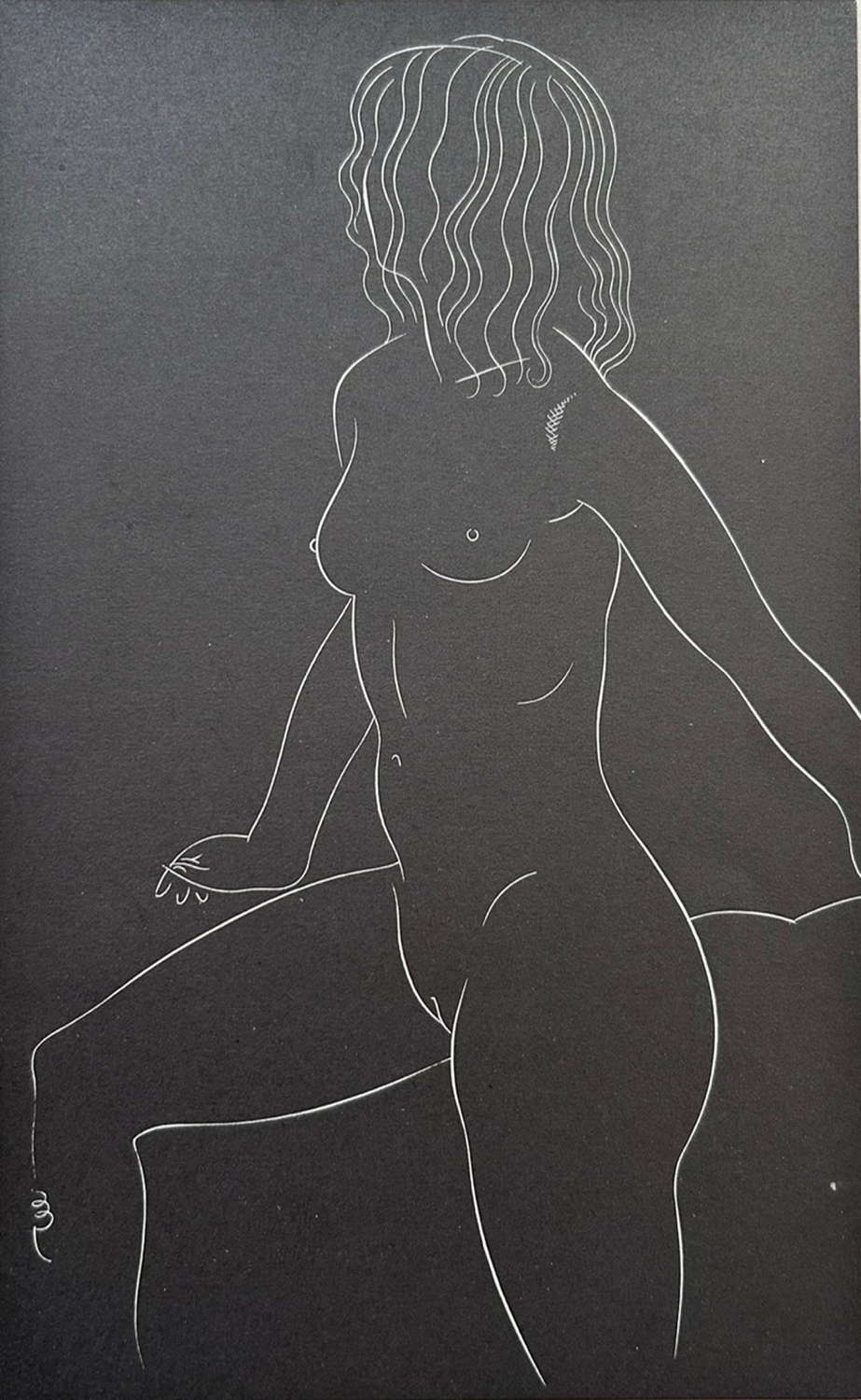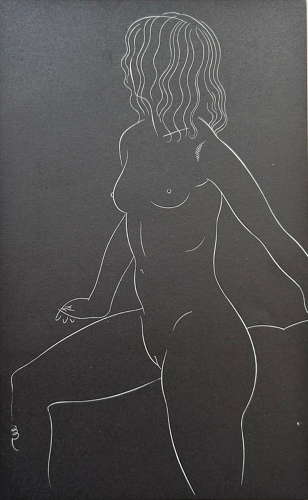

A Nude Engraving (5) by Eric Gill
Code: 12749
Dimensions:
Wood engraving from Eric Gill’s suite ’25 NUDES’, 1938
Signed by the artist with monogrammed initials in the plate.
First edition, printed in 1938 by Hague & Gill Ltd, High Wycombe, and published by J.M.Dent & Sons Ltd, London
Condition Near Fine for age
Eric Gill (1882-1940)was born in Brighton, the son of a non-conformist minister. He studied in Chichester at the Theological College, and then at the Technical and Art School before moving to London and attending the Central School. Gill later lived in Sussex.
While apprenticed to an architect in London, he became smitten with the world of calligraphy, which he entered by attending classes given by Edward Johnston. He was profoundly influenced by Johnston's dedicated approach to work and decided to join the world of Arts and Crafts.
During his lifetime he set up three self-sufficient religious communities, influenced by his Roman Catholic views, where, surrounded by his retinue, he worked as sculptor, wood-engraver and type designer. He also wrote constantly and prodigiously on his favourite topics: social reform; the integration of the body and spirit; the evils of industrialisation; and the importance of the working man. He converted to Catholicism in 1913 and this influenced his sculpture and writings. He designed his first typeface, Perpetua, for Stanley Morison who had badgered him for years on this matter. Of all the 11 typefaces that he designed, Gill Sans is his most famous; it is a clear modern type and became the letter for the railways - appearing on their signs, engine plates, and timetables. Gill never completely abandoned the religious roots which inform his work.
Eroticism also features as an important part of it, and Gill was not afraid to combine the two. He held a number of teaching jobs, including gilding at the Central School, and was an associate of the RA. In 1937 he was awarded an honorary associateship of the Royal Society of British Sculptors.
Gill died in 1940 in Middlesex.
